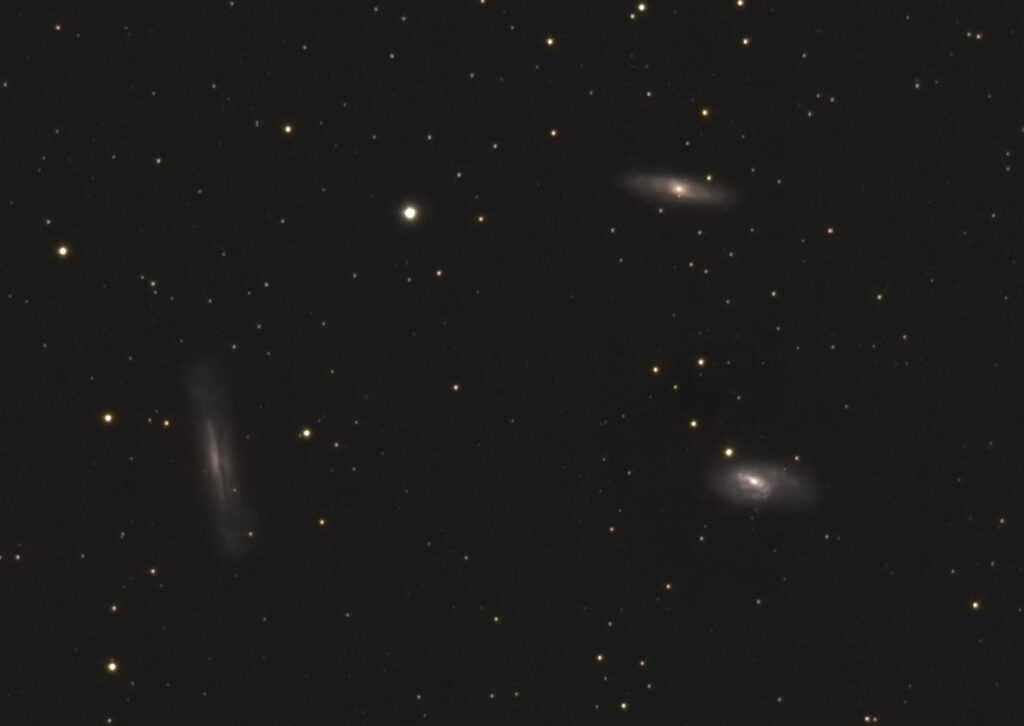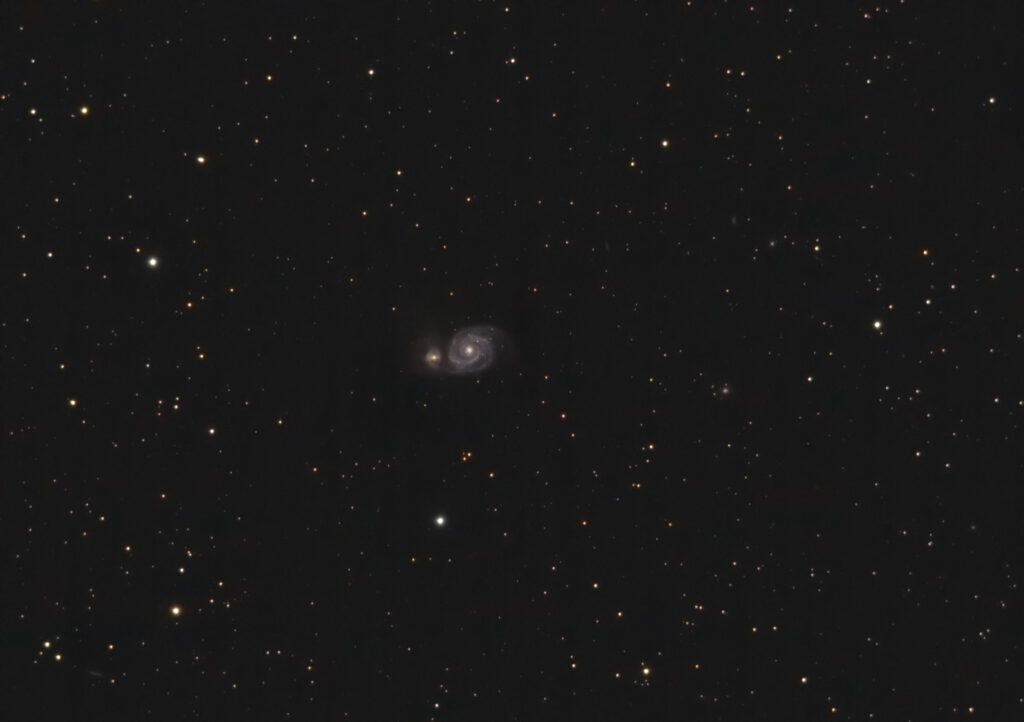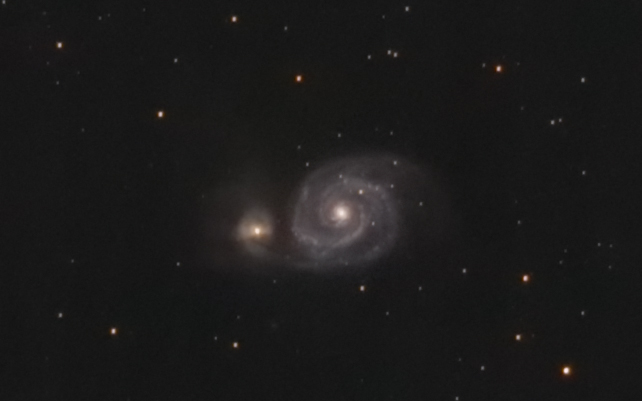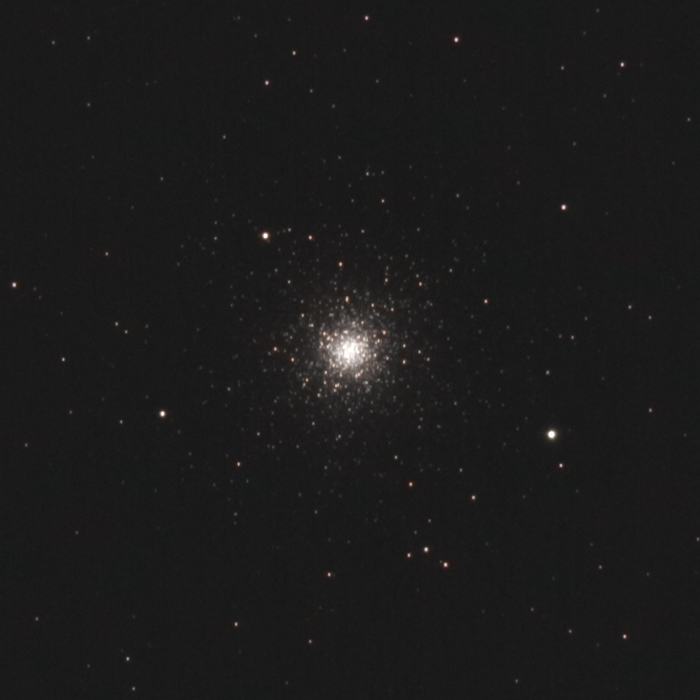First Success
I purchased a Sky-Watcher EQ6-R Pro mount a few years ago, but it has mostly sat unused for reasons that I won’t go into here. Its performance on the few times I have dragged this monster to an observing site have been less than stellar because I could never seem to get it polar aligned.
After making various adjustments and reading everything that I could find about the mount (which, sadly, is very little and often poorly written), I came to the conclusion that the polar alignment reticle was installed upside-down. I am now convinced that is the case.
This past weekend I went to the Sam Houston State University observatory, determined once-and-for-all to crack the mystery of how to polar align this mount. “0” o’clock is at the bottom when the counterweight is in the down position. It should be at the top. So, reading “6” as “0” I was able to get a decent manual polar alignment.
I took a few test images and was impressed to find that the mount tracked accurately for at least a minute in every single image.
So, I decided to spend the rest of my time taking pictures of as many things as I could to see what I’d get. The sky was clear, visibility and seeing were decent, and the humidity was relatively low for our area. The moon was at about 75% illumination. I didn’t expect to get a lot of detailed images, but my goal was to just experiment.
I’ve already written too much boring detail, so I won’t go into the rest as it probably doesn’t serve any purpose to talk about it. The short version is that I took a bunch of images, but didn’t capture any bias, darks, or flats (I’ve never figured out how to get decent flats, anyway). Below are the results. All were taken with the Canon EOS Rebel T3 on the Astro-Tech AT72EDII. All were stacked with DeepSkyStacker and processed in Photoshop. No autoguiding was used–figuring that out is a future project.

The image above is definitely not my best of the Sword of Orion, but the fact that I got 10 one-minute exposures with no star trailing blew my mind. I would be lucky if half of those images turned out decent with my old Vixen Super Polaris mount.
I’m pretty certain that my camera is about 2mm too close to the focal reducer. I think that lies outside the margin of error for this focal ratio (f/4.8). A set of spacers has been ordered and is on the way, so hopefully that problem will be resolved soon.
The T3 camera is not the best match for the AT72EDII scope. A camera’s pixel size should be within a certain ratio of the scope’s resolution, as expressed by this formula:
Image Scale = Pixel Size (µm) / Focal Length (mm) * 206.3
If I understand this correctly, then the ideal image scale should be in the range between 1.0 and 2.0. The T3 has a pixel size of 5.19µm, and the AT72EDII with the 0.8X focal reducer has a focal length of 344mm. That produces an image scale of about 3.1. Anything greater than 2.0 results in “oversampling” in normal seeing conditions, which means that it takes too many pixels to render a star, which in turn results in bloated stars in the image. The brighter stars in the image above are oversized and some pairs of stars that should be very distinct are blended together.
Next, I chose to take a few images of Messier 45, the Pleiades cluster. Again, this was more of an exercise in checking the tracking. I was surprised to see that some nebulosity (enhanced here) made it through the moonglow.

Both the Sword of Orion and the Pleiades were on the moon-side of the sky, so I thought it was time to try something a little further away. The Virgo Cluster was up in the east, but I thought the Leo Triplet might be a good target to try. I was very impressed that they were fairly well visible in all of that light!

Encouraged by the Leo Triplet, I slewed the scope over to Messier 3 in the constellation Canes Venatici. This is a pretty little globular cluster, and one of my favorites. I was very happy with how this image turned out. I used a shorter exposure time because at one minute the center of the cluster was overexposed.
And then, on the suggestion of a friend, I rounded out the night with shots of Messier 51, the Whirlpool Galaxy. This is my favorite image from the night, and quite possibly my best image of the Whirlpool, despite the sky conditions and simplistic capture method. I hope to revisit this target on a better night in the near future.

All-in-all I am very pleased with what I got. This mount has finally redeemed itself, and I’m confident that it can do far better once I learn how to use it properly. I’m looking forward to more nights at the observatory and hope to go to some good dark-sky sites this coming summer.



1 comment